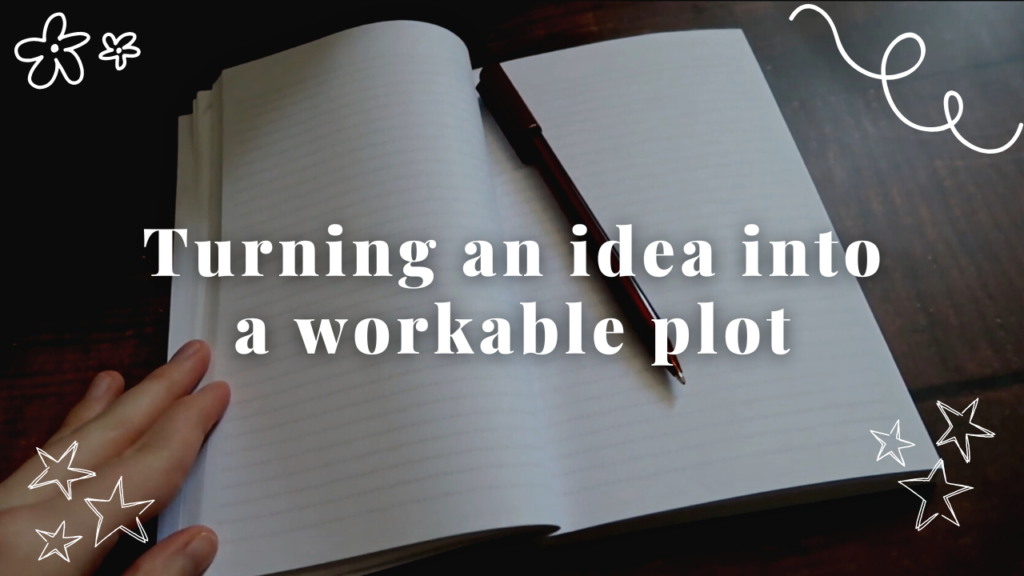
When I talk about being a writer one of the most common things that gets said to me is, “I would love to write a book, but I wouldn’t even know how to start.”
To me, starting is the fun part. I have an overactive imagination with a head full of stories that I cannot wait to get down. However, turning these ideas into a workable plot can sometimes be a bit more complicated and it can sometimes be difficult to know where to begin.
However, the fact that you’d like to write a book, usually means that you have some kind of idea as to what the novel is going to be about. It might be that you have a character, a setting or perhaps you just have vibes.
Today, I am going to show you what I do when turning an idea into a workable plot.
For me, it begins with a list, or a mind map, or mood board—whatever I choose on the day—of everything I know about my story. Absolutely everything. It can be completely random. Sometimes I know a lot, sometimes only a little. For example, perhaps you know that one of your characters is a troll who loves blue socks or perhaps you know that you want the novel to be set in a café by the sea.
Whatever it is that I know, I jot it all down and just let my idea flow.
I prefer to do this longhand as I find that an empty page is less intimidating than an empty document. As I go, I doodle, scribble, cross out, and start again. These are just my early ideas. No one is going to see or judge them and this knowledge allows me to write freely.
Sometimes I really do not have much, to begin with. However, when this happens, I try to think about the basics of the story.
Who is in my story? Characters are going to be the ones who experience the story and they are also often the ones who drive the story’s direction Which makes them a jolly good place to start. Again, I just keep to the basics; my hero, my villain, perhaps a side character or two. This is the very start of my novel writing journey so I don’t have to have a full cast list formalised. Just a rough idea so who is in my story.
And as I develop each one, I start to consider what is their goal, their obstacle, what might they learn within your story, what might they gain or lose, strengths, a weakness, or even something really random, like our troll who loves blue socks.
I also think about where the novel is set. Just to be clear, who and where don’t have to be decided in this order. I know some writers who always start with the location of their novel first before anything else. Perhaps you know that you want to set your novel in a café or a library or a fantasy world full of dragons. Scribble it down and let your novel’s world being to build.
For me the characters and the world tend to develop together, so I work on the two interchangeably.
Once have started to develop the world and the characters, I consider what. What happens in my story? Does my sock-loving troll lose his favourite pair or is my café by the sea given only a few weeks to pull itself out of debt? Here it is often important to look at different types of conflict that might occur in the story: what do the characters want, what is getting in their way, what is at stake if they don’t get it, what is going on in the world of the novel that might cause problems for that character.
For each idea, I build it further, ask what if, and flesh it out until I find myself knowing more and more about the novel that I wish to write.
Once I know a bit more, I start to consider how I want the novel to begin or end. Sometimes I think back on one of the characters; see what is their flaw, if there is a lesson you want them to learn, and the climax of the story could develop on from that. I do not worry about creating a structure or laid-out plot, but it is something that I naturally keep in mind as I am building up my ideas.
And if or when I get stuck, I just take a break.
I will read novels within the same genre as the one I wish to write. Take notes from it; see what I liked or didn’t like about it. Or I’ll watch movies. Sometimes in the same genre but most of the time not. I also like to listen to music and try to build a playlist that fits the theme of the novel that I am going for. Or search on Pinterest for mood boards and inspiration. Relax, soak it all in, and search for those vibes that fill you with creativity.
Before I know it, I end up having pages worth of ideas and slowly but surely, they’ll develop into something workable.
From there I may be able to develop an OUTLINE or might have enough to develop a ZERO DRAFT, but these are things we’ll look at another time.
Now, this is simply what works for me—how I begin my writing process—but it might not work for everyone. And that’s okay. We all work and write differently. We need to uncover what doesn’t work in order to find what does.
